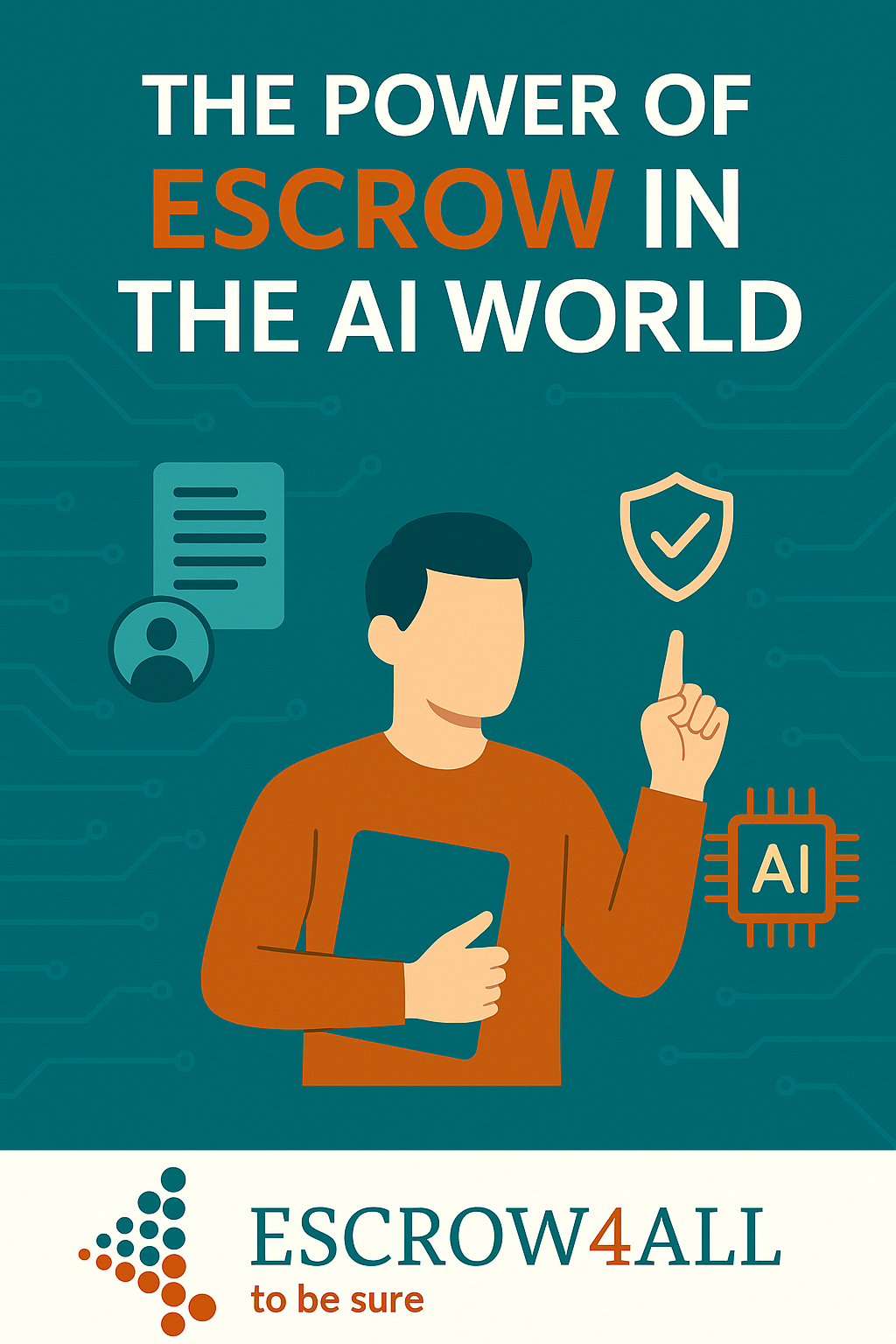
AI changes everything, including Escrow: How do you safeguard continuity in an age of algorithms?
Artificial intelligence (AI) is no longer futuristic. It is now woven into our daily software, from automated customer service to advanced predictive analytics. But where AI offers huge opportunities, it also confronts companies with new questions about ownership, continuity, and legal certainty. And that’s exactly where software escrow comes into play, cast in an entirely new light.
AI software: not just code, but also data and models
Traditionally, escrow focuses on source code and documentation. But AI systems consist of much more than that:
- Model architecture – the neural network itself
- Trained weights and parameters – the ‘knowledge’ that forms the model
- Training data – often crucial for performance, yet legally and ethically complex
- AI pipelines – the infrastructure for training, updates, and inference
A classic Software Escrow that only covers the source code is therefore no longer sufficient for AI solutions. The question becomes: how do you safeguard all components of an AI solution so that continuity is guaranteed if the supplier disappears or changes?
New risks: from black box to ethics
AI adds new dimensions to the risks that escrow must cover:
- Version control: AI models evolve rapidly; escrow must account for frequent updates and retraining.
- Transparency: Many AI models are ‘black boxes.’ How do you ensure reproducibility and explainability upon transfer?
- Data access: Without the original training data, an AI model is often worthless. Is that data even allowed to be placed in escrow from a legal standpoint?
- Bias and compliance: Legislation such as the EU AI Act requires companies to monitor bias and classify risks. Escrow can serve as an independent control mechanism.
What changes for escrow agreements?
Companies need to review their escrow strategy and expand it with AI-specific elements:
1. Broad coverage: Include not only source code but also models, datasets, documentation, and deployment scripts.
2. Verification & repeatability: Periodic tests to ensure that the AI system remains reproducible upon a release.
3. Ethics & compliance: Record how the AI meets regulations and how audits are carried out upon transfer.
4. Data escrow: New structures for secure storage of training data, including agreements on privacy and intellectual property.
5. Continuity of AI services: For SaaS– and API-based AI services, escrow must also guarantee the operational environment and API access.
AI and escrow: from defensive to strategic
Where escrow was traditionally used as ‘insurance’ for worst-case scenarios, it takes on a more strategic role with AI. It can not only guarantee business continuity but also support compliance with the rapidly changing laws and regulations around AI. Companies that arrange this proactively position themselves as reliable partners in a market where trust is crucial.
The next step
The rise of AI therefore calls for a redefinition of escrow—not only to provide legal certainty, but also to address the technological and ethical complexity of AI. Those who think about AI escrow today will have an advantage tomorrow in a world where continuity and trust make the difference.
In short: AI doesn’t just change software; it changes the rules of the game for how we arrange certainty, ownership, and responsibility. Escrow is no longer an old-fashioned emergency provision, but a crucial link in digital sovereignty.
Also view these posts

Let’s meet
Looking for innovative escrow solutions?
Contact us now.


